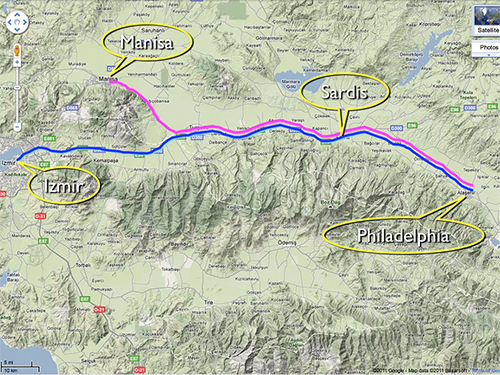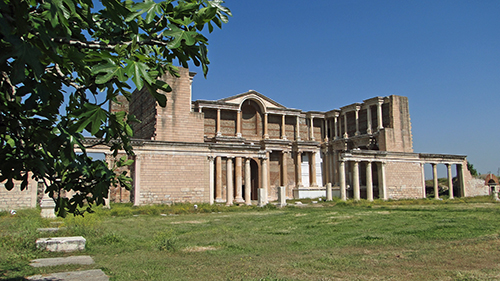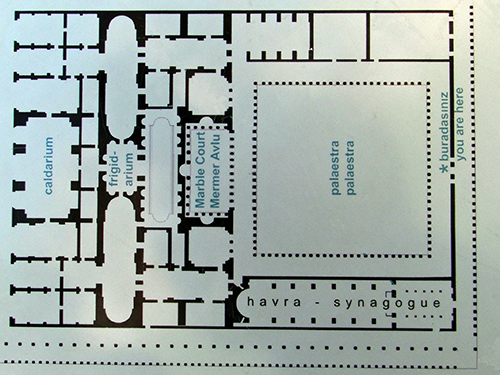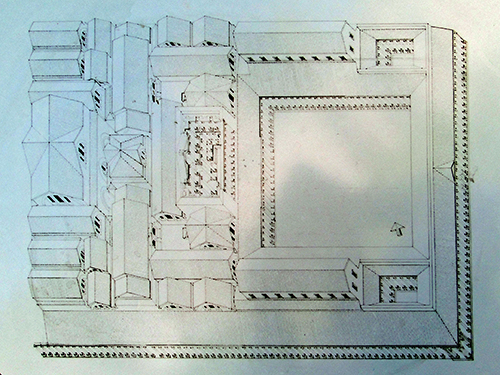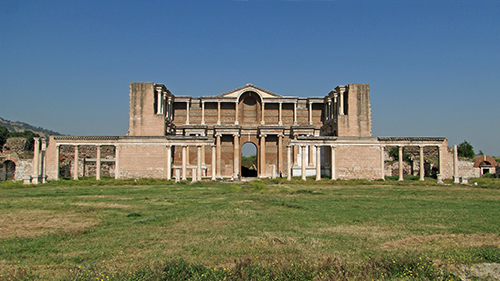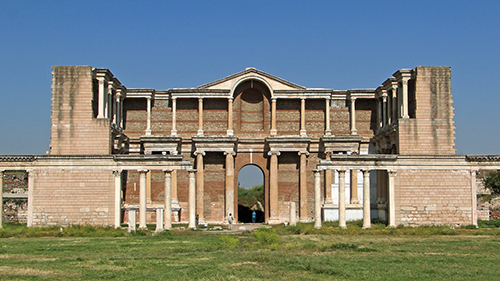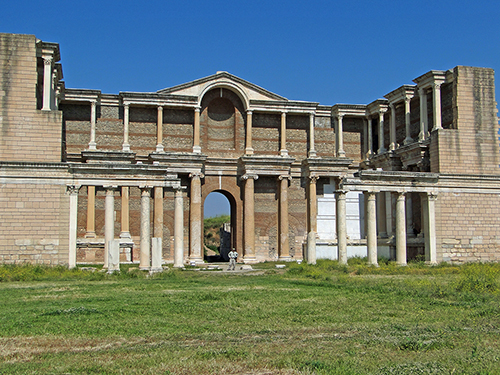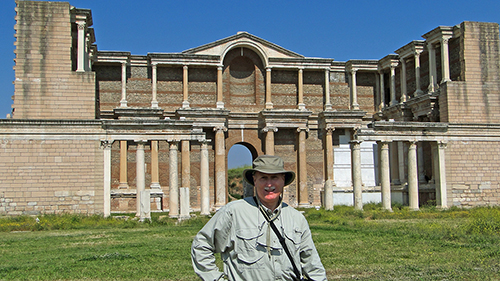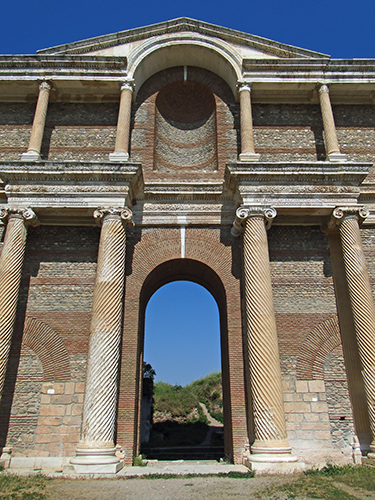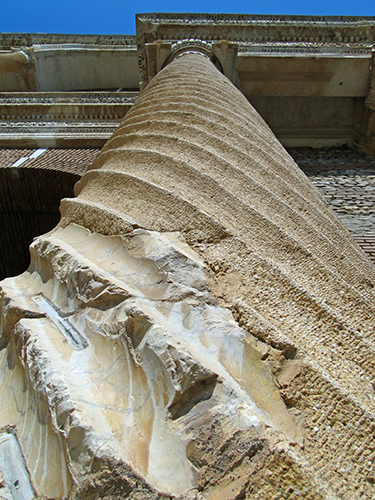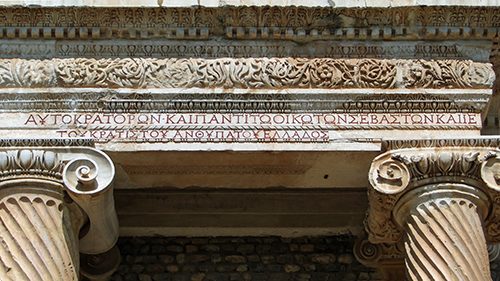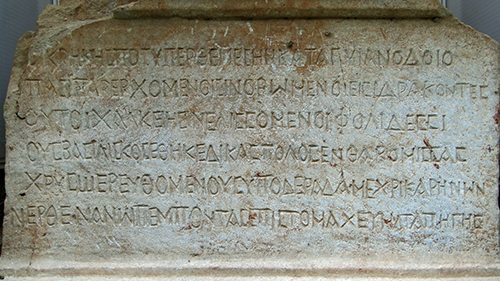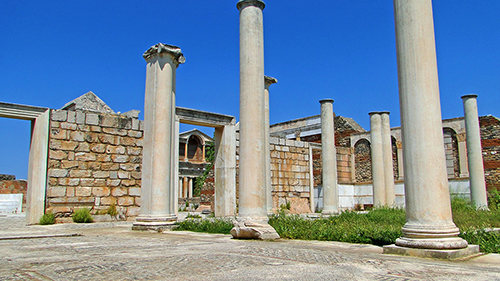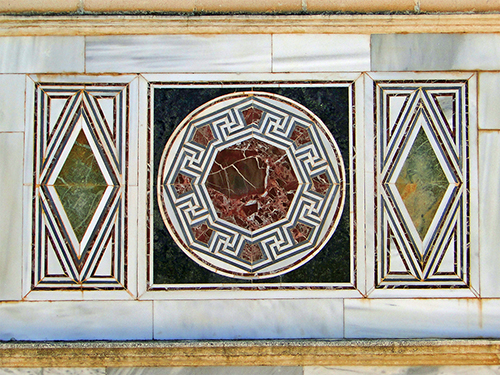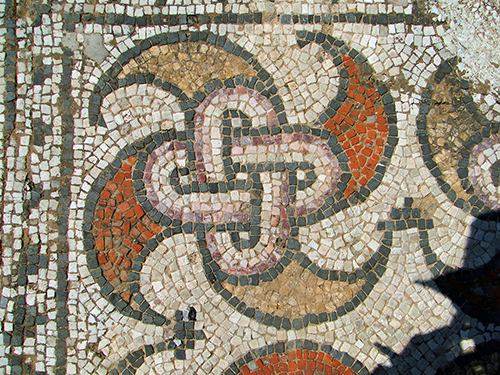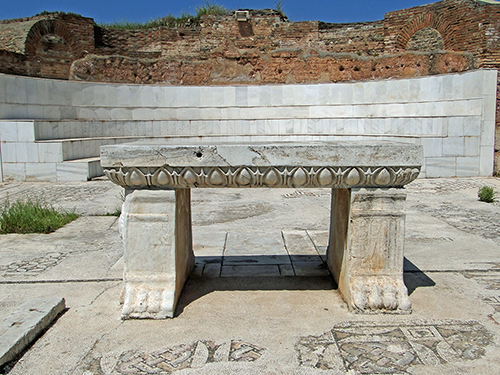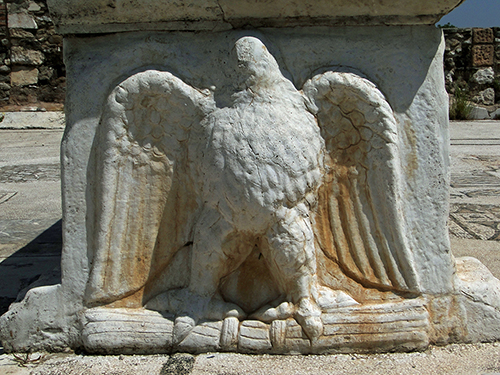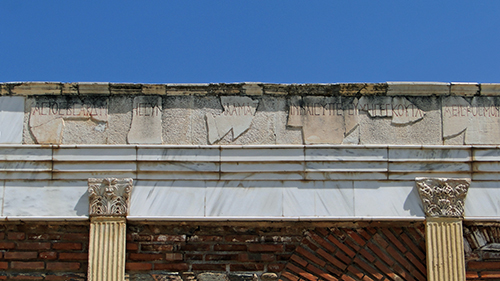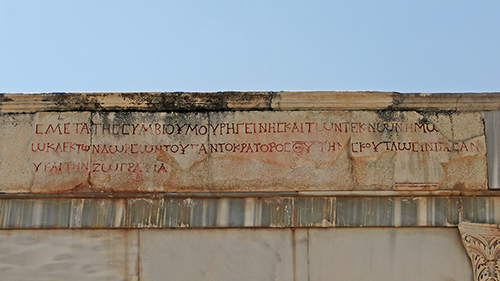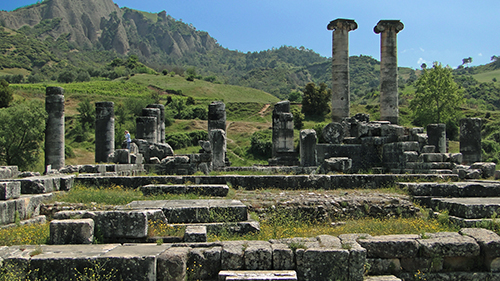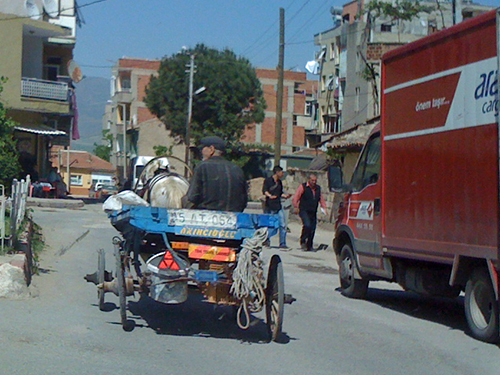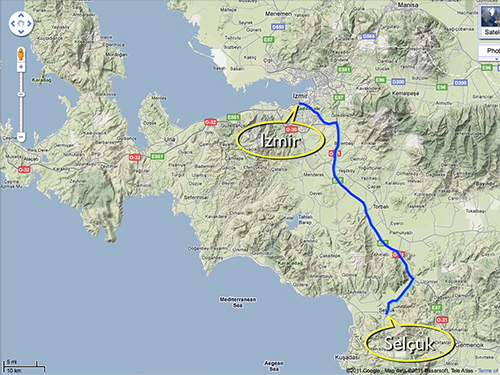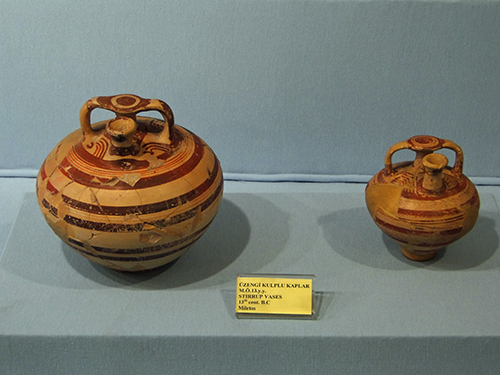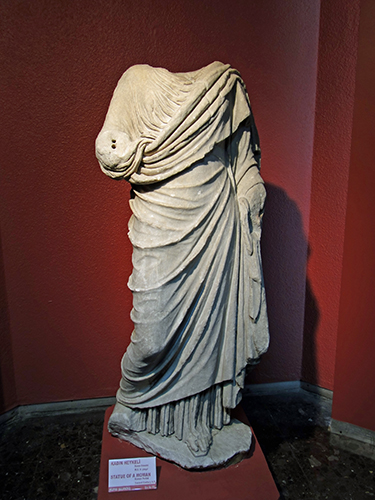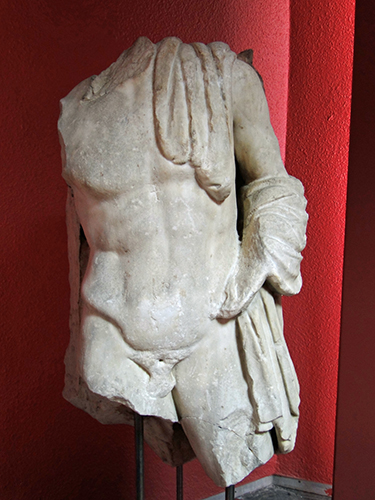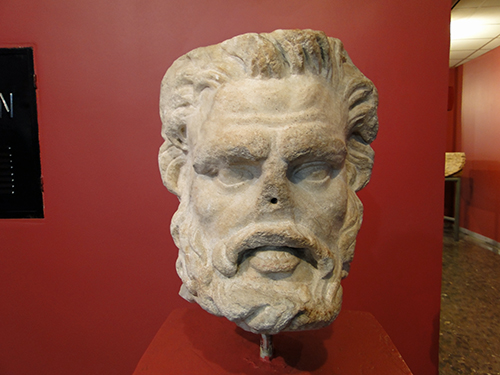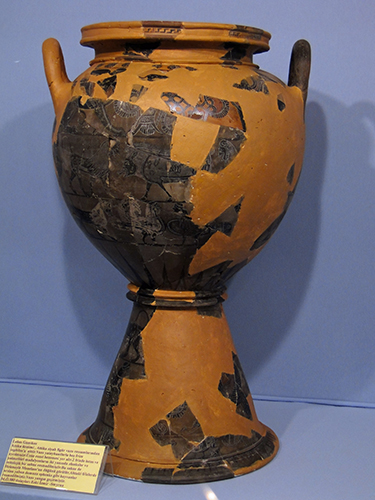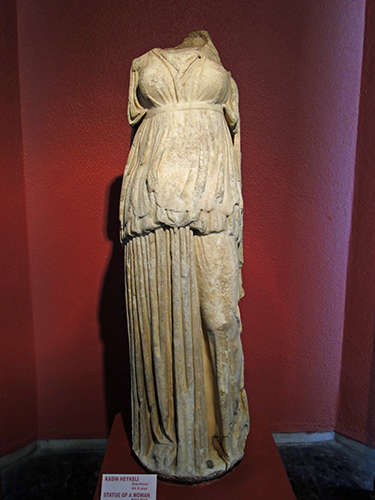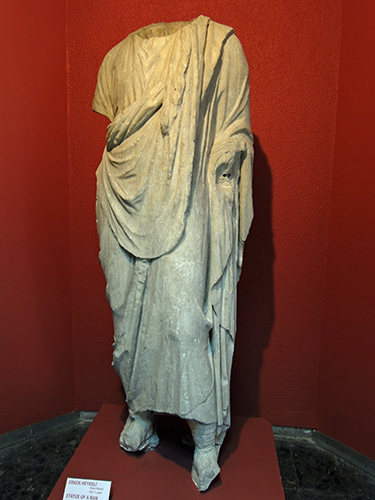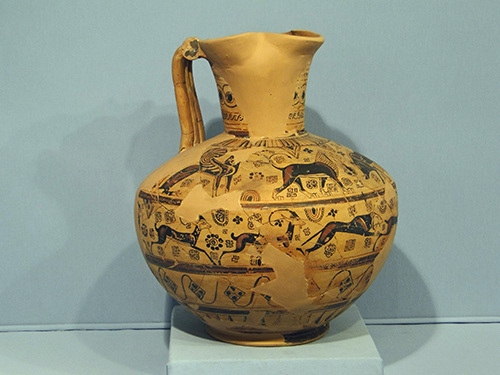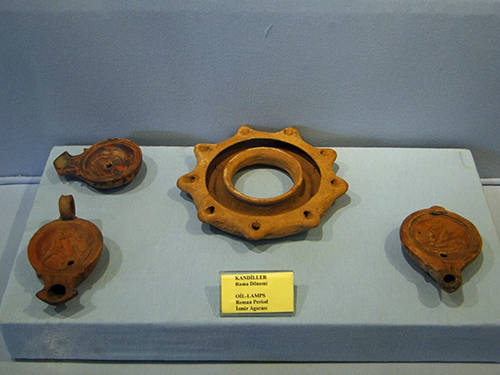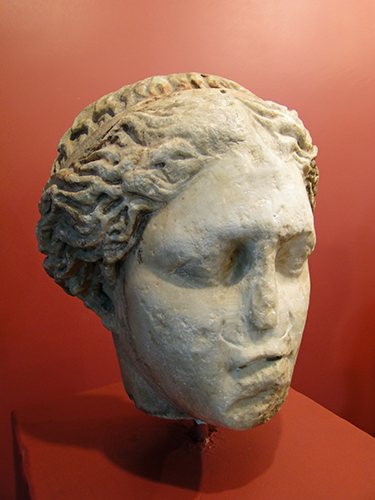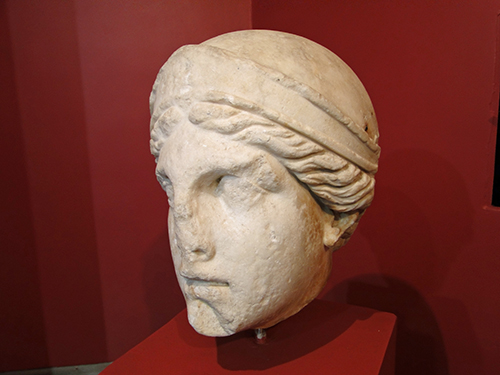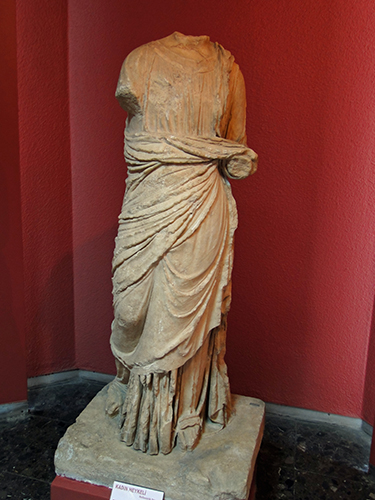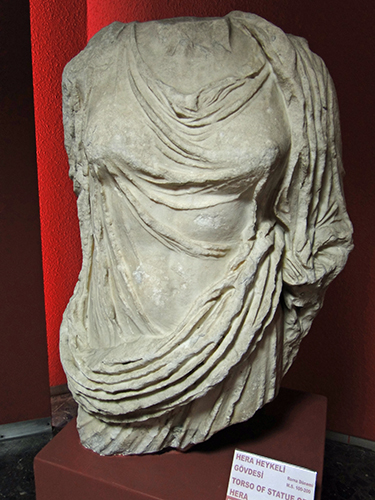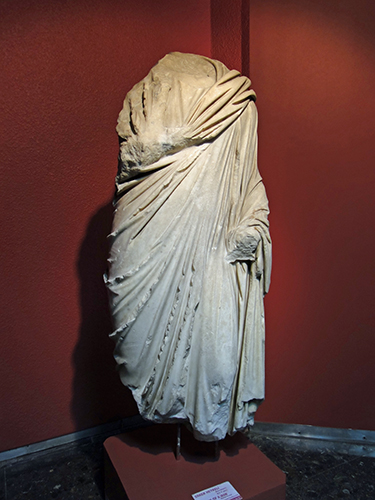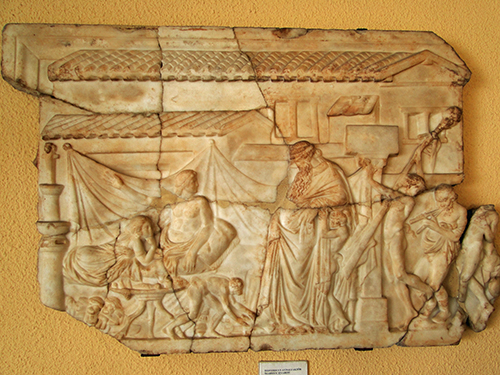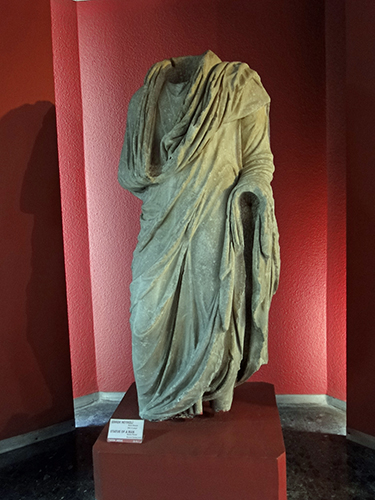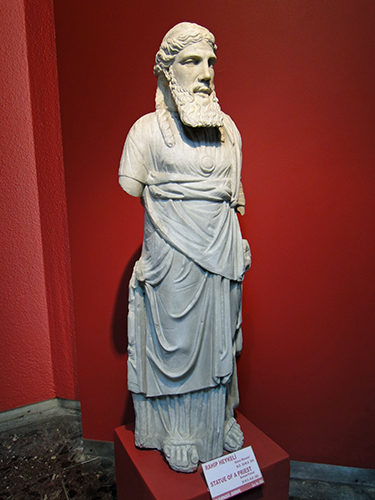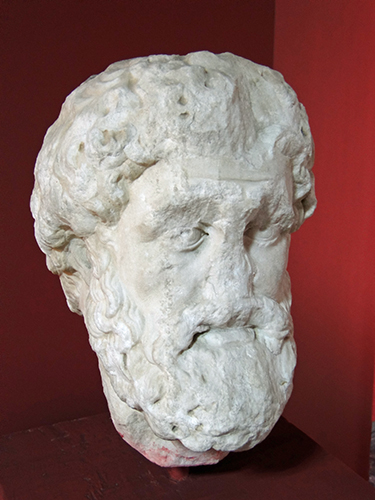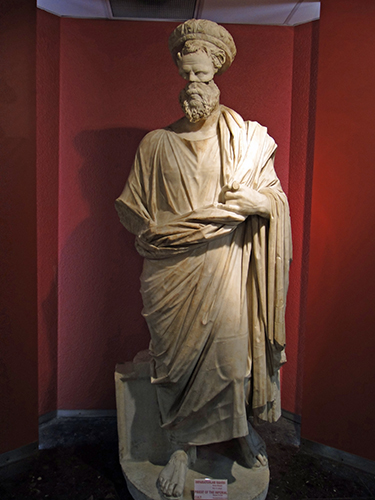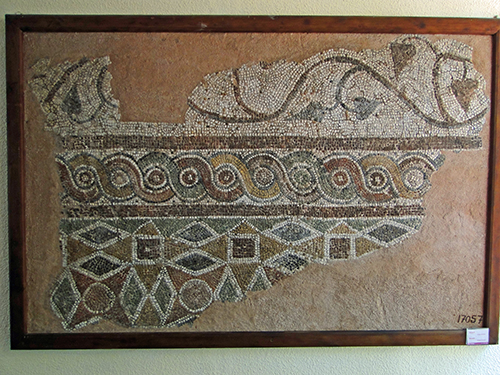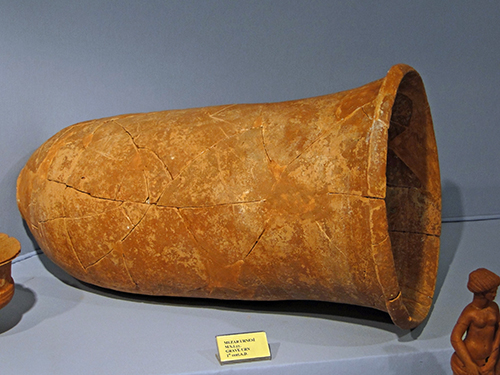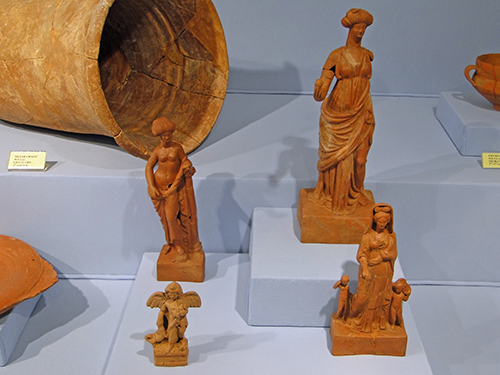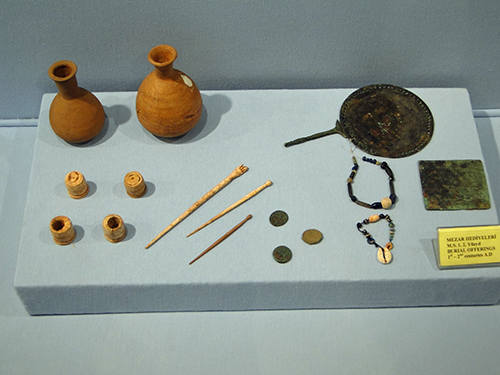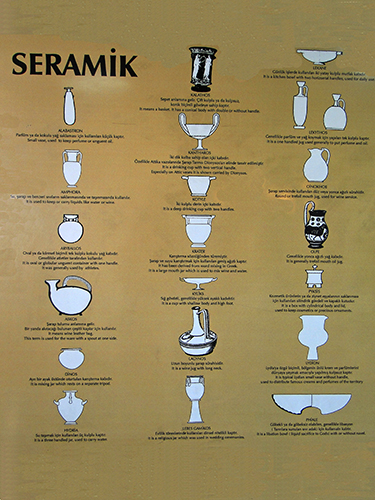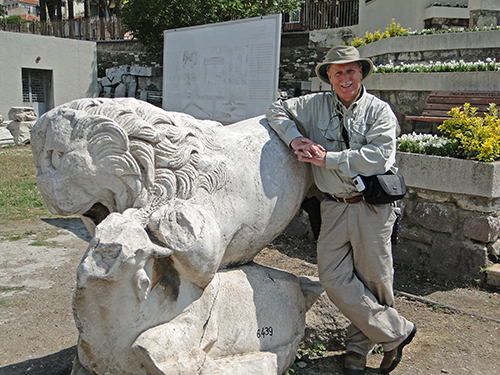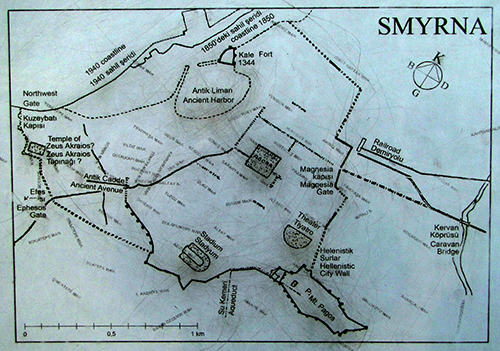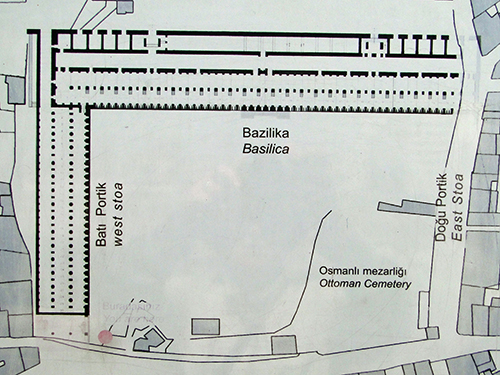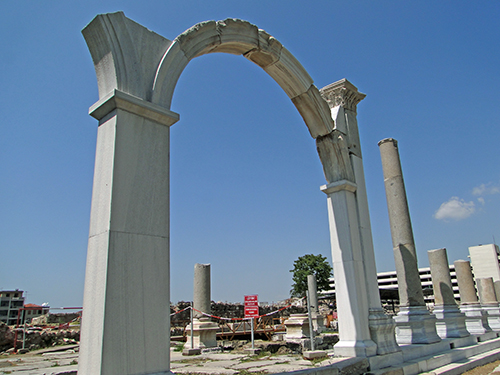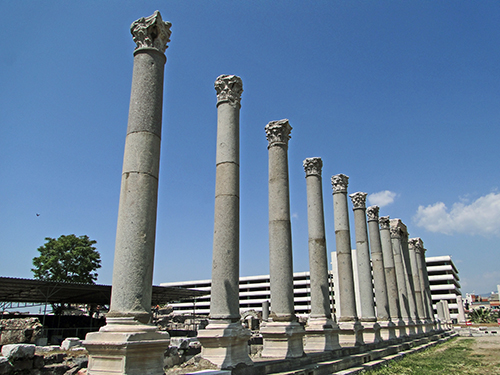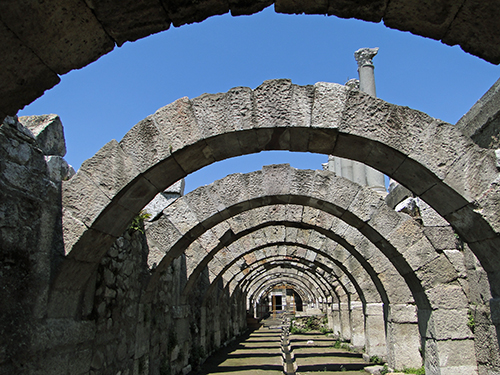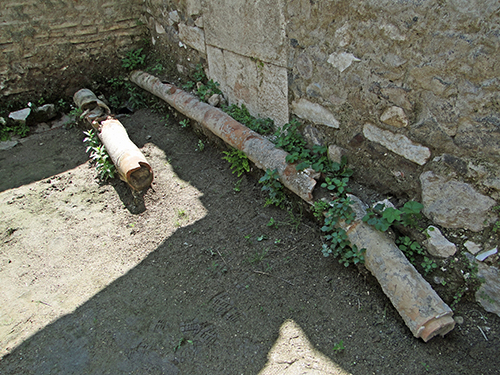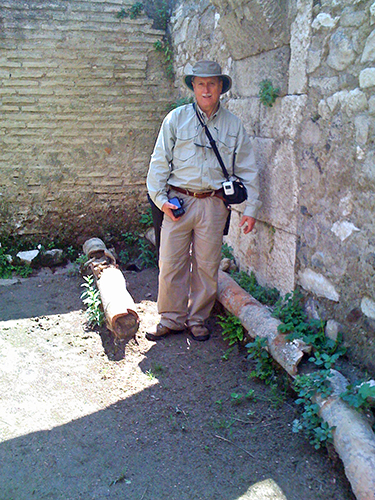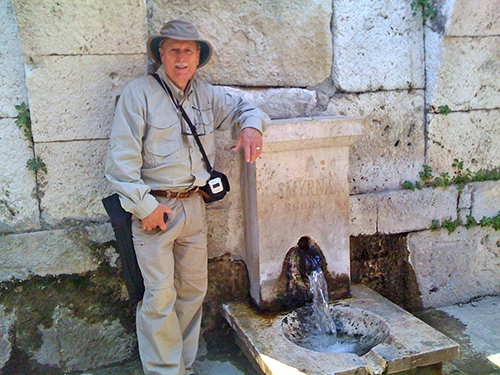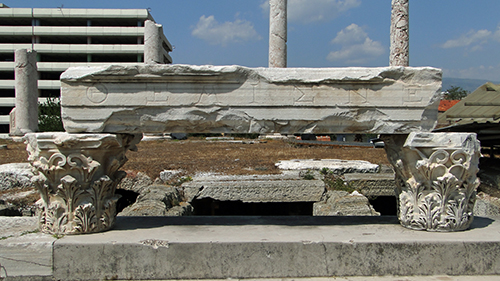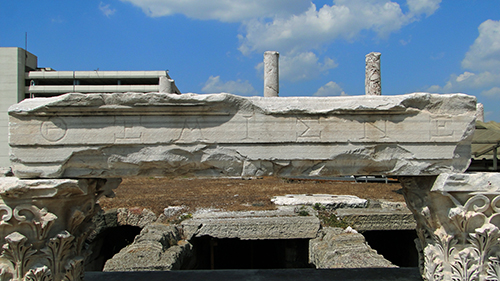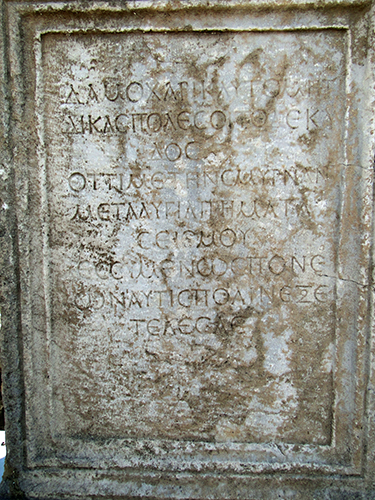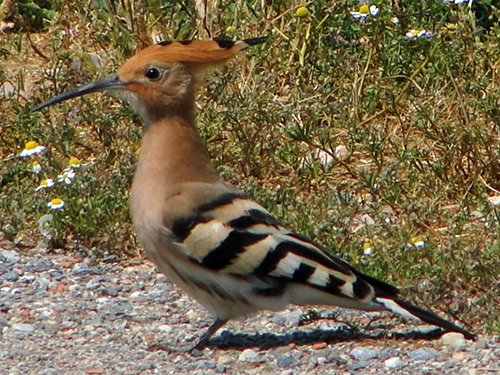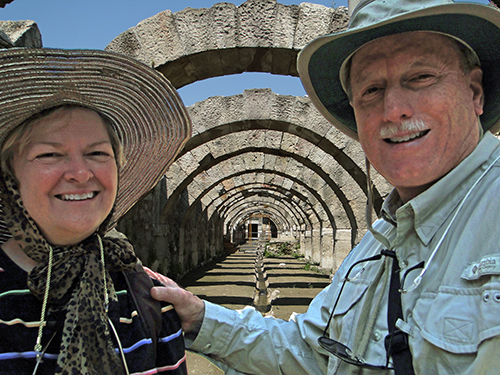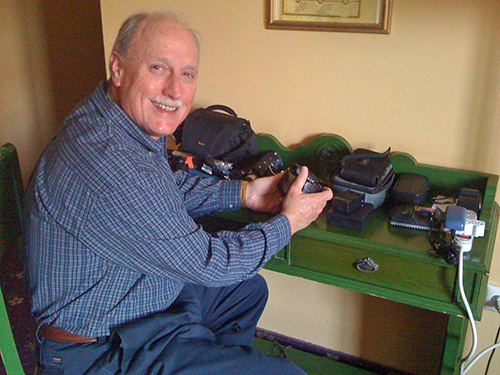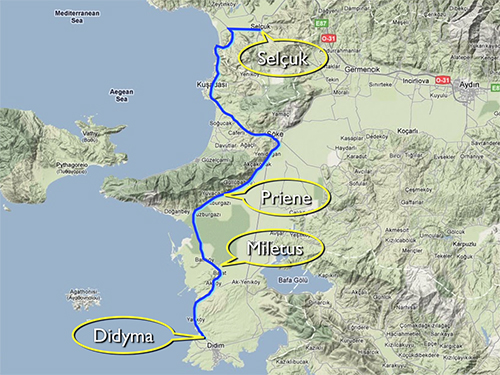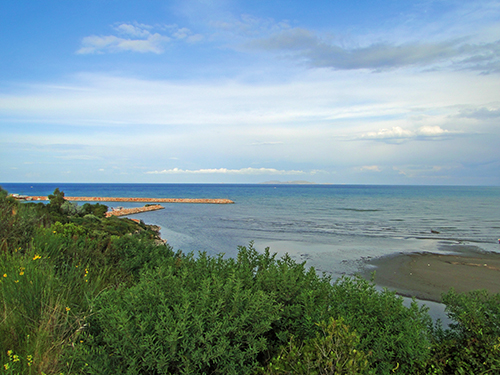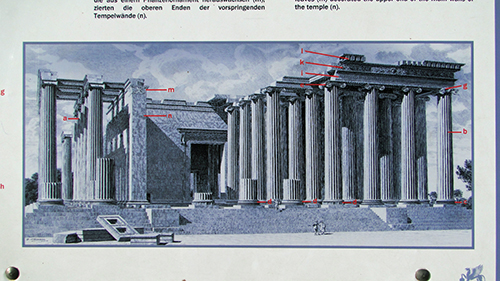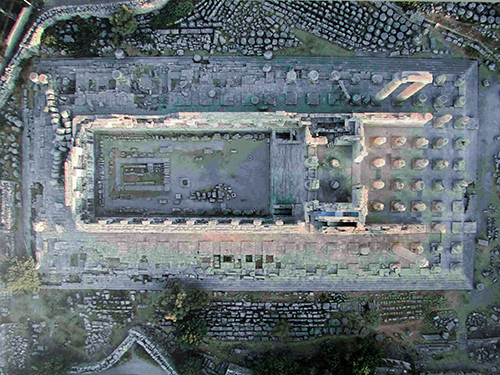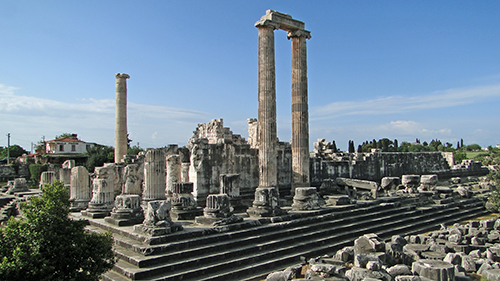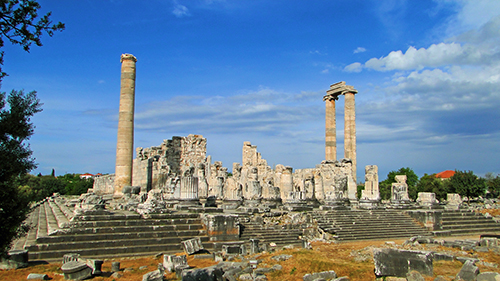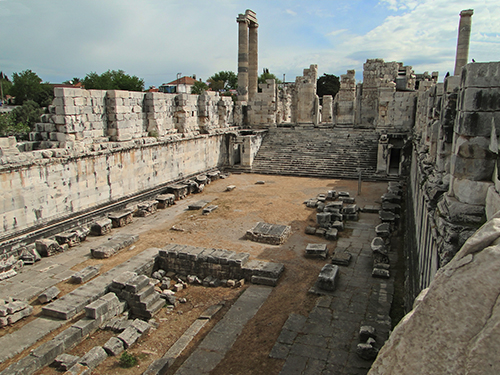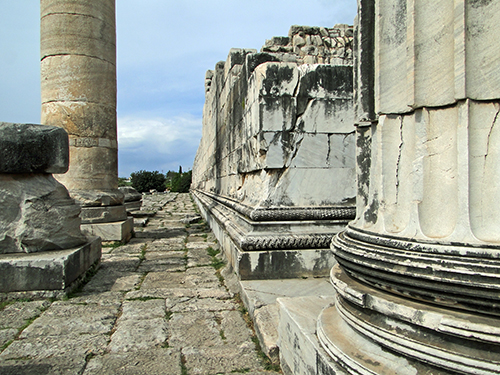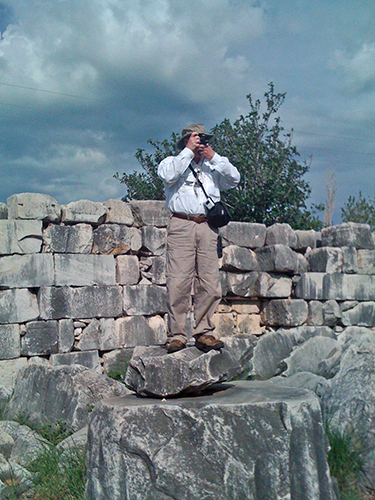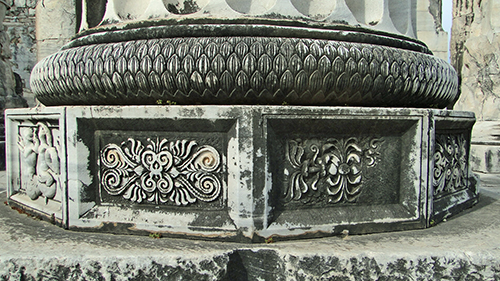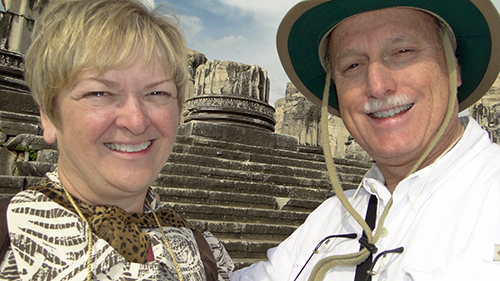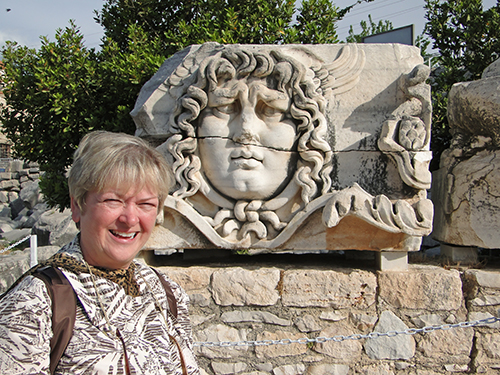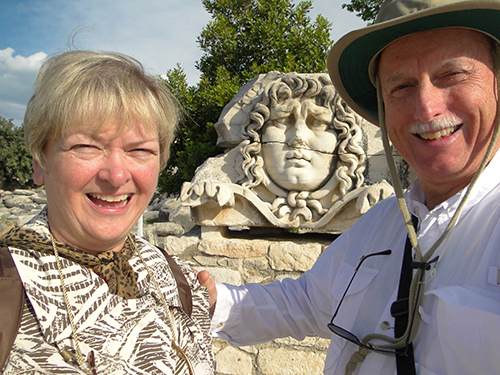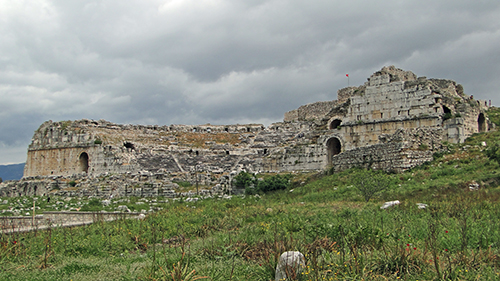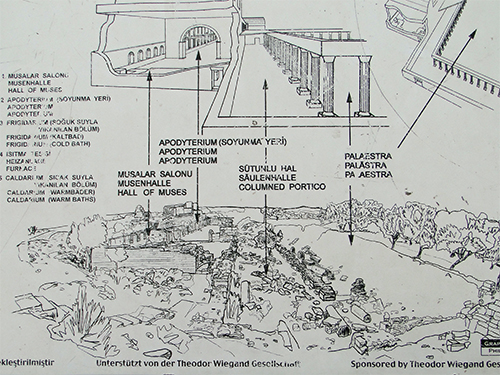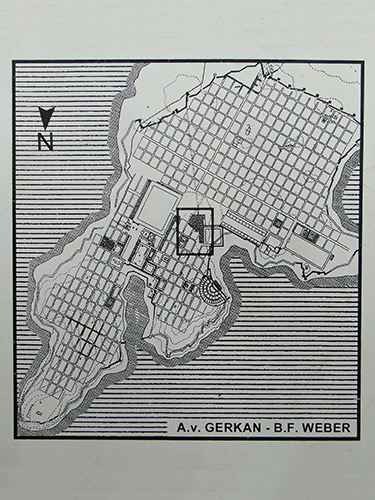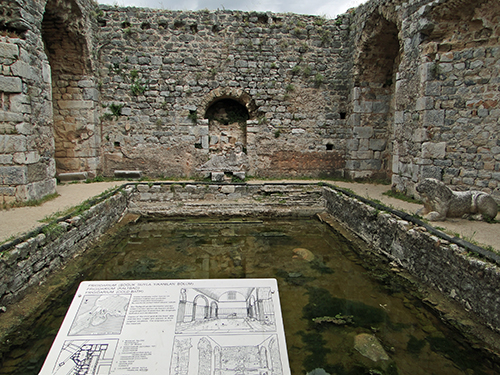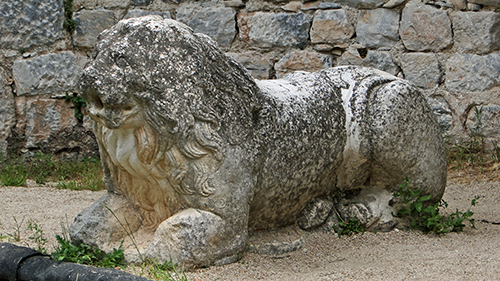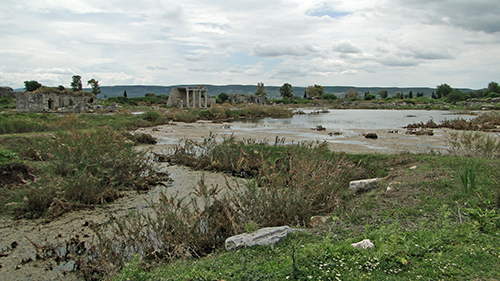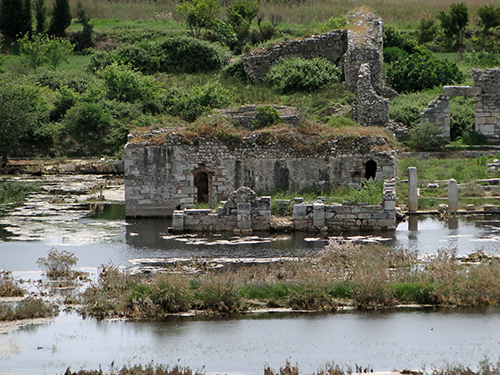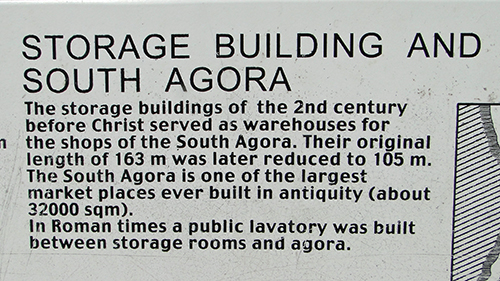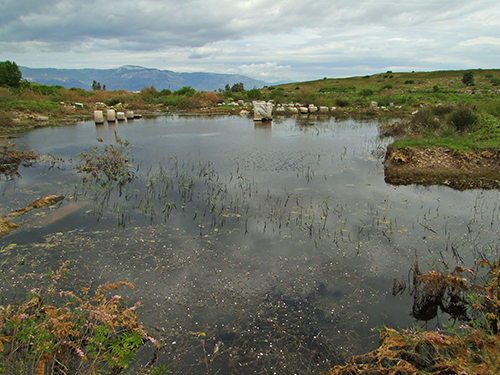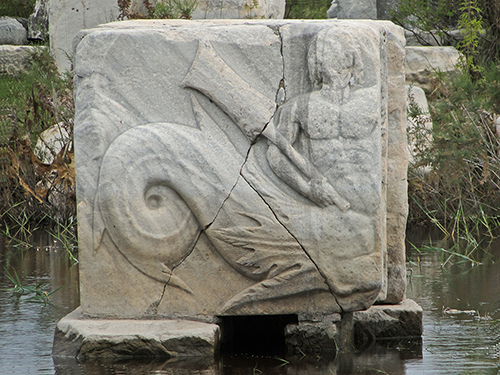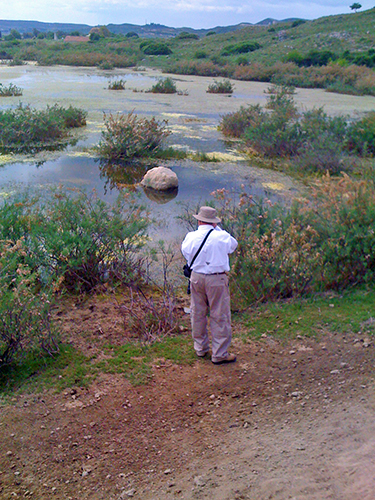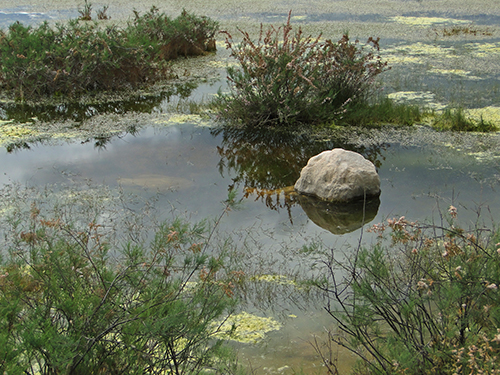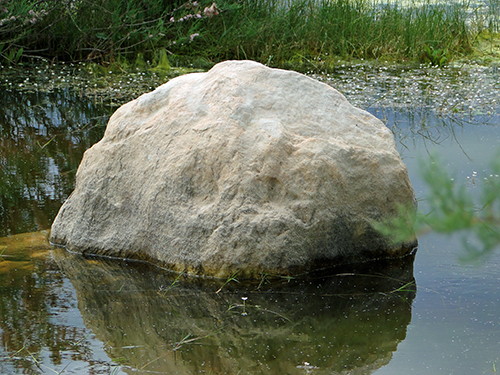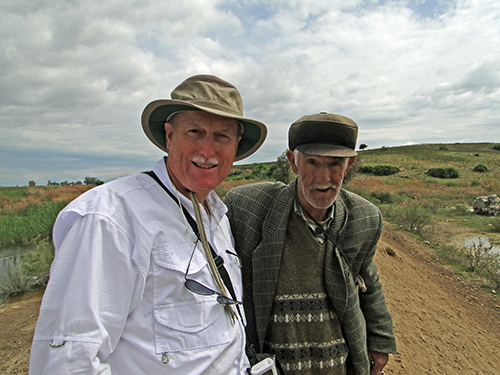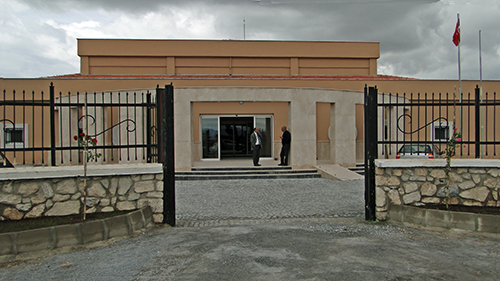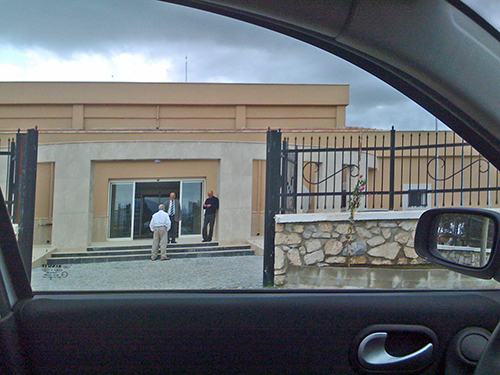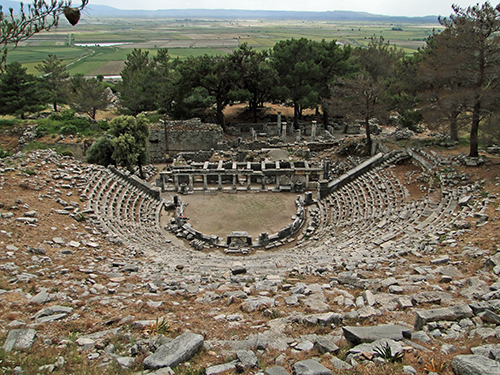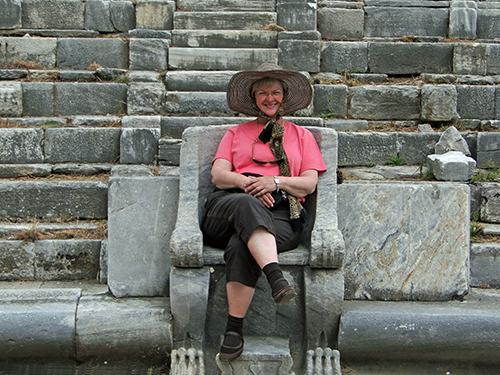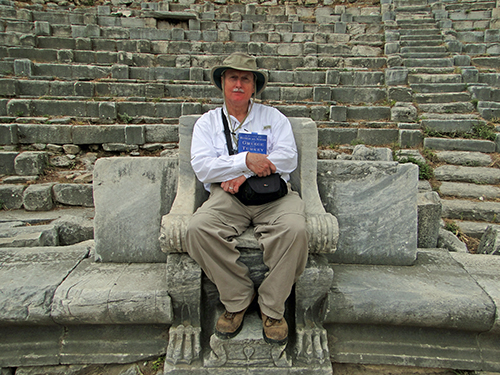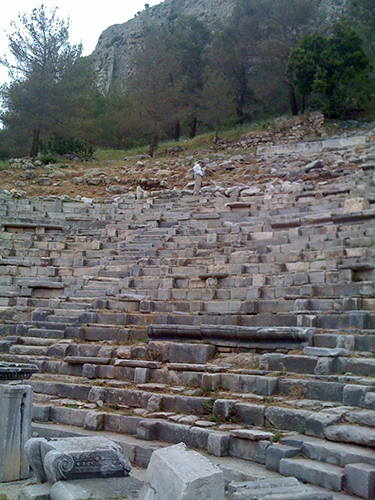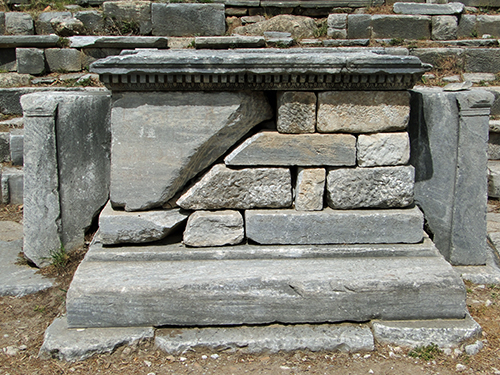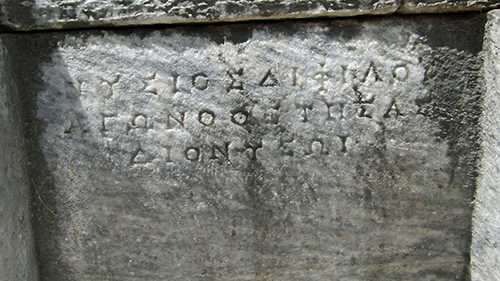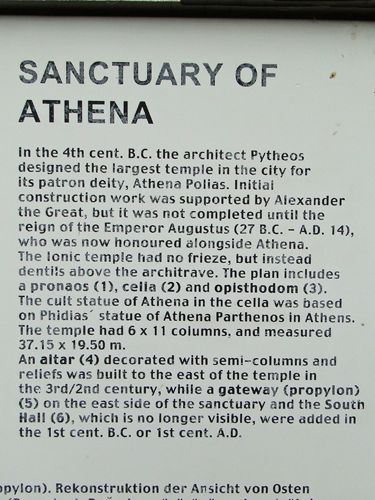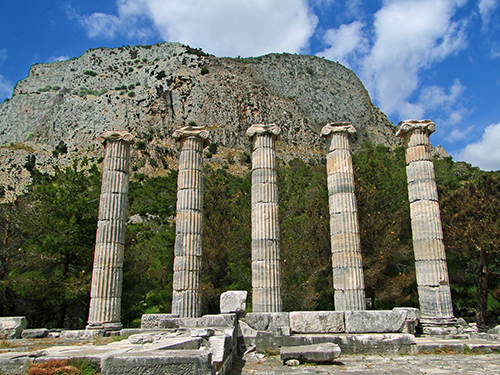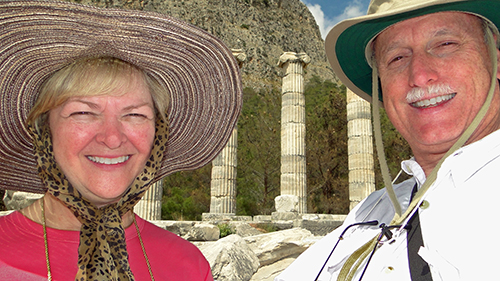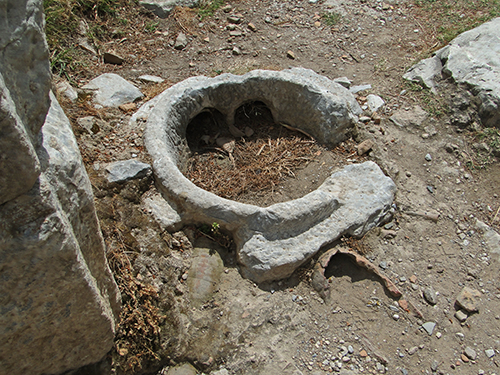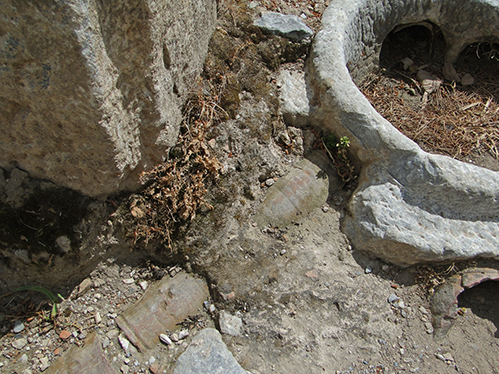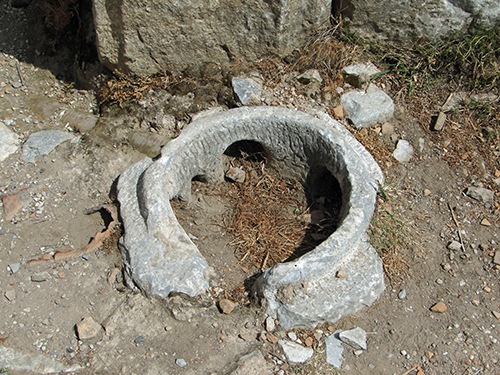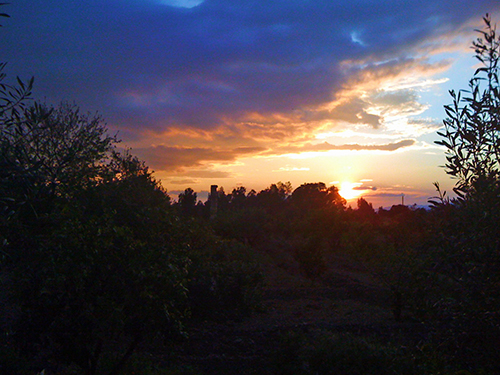April 23, 2010 (Friday)
Izmir Morning. Before checking out and hitting the road, we think we might get in a quick visit to another museum Mark Wilson had recommended at the harbor dinner last night. We get up early to catch a 7 am breakfast and then walked to a nearby park area to try to find the museum. Unfortunately, everything is closed, and a note on one museum window said the museum had been moved to the Konak area. We realize Mark’s information is out of date, so we head back to the hotel and check out.
Sardis. Off to Sardis, another of the seven churches of Revelation. The Garmin does not help much, but we manage to find our way out of Izmir toward Sardis. We meet Jerry’s goal of making Sardis in the morning to get a lot of good morning pictures of the Marble Hall at Sardis. We were here in 2002, and not a whole lot has changed, but Jerry now has better pictures than before.
Marble Hall. Below is a schematic of the entire complex of the bathhouse, palestra (open court exercise grounds), and Jewish synagogue. Notice carefully how the synagogue, one of the largest ever discovered in the ancient world, is housed as an integral part of the Greco-Roman bathhouse complex. The Jews were incorporated fully into the Greco-Roman cultural and social world of Sardis.
You have to look carefully to see Jerry standing in the two pictures below! This Marble Hall entrance to the bathhouse complex is built on a grand scale. Very impressive in person.
In the picture below you can see what the archeologists had to reconstruct of this originally all-marble column using supplemental material. The bricks comprising the walls were really the Roman form of our 2x4s we use as the superstructure for our walls. On top of the brick support structure the Romans would overlay marble. So, you have to imagine the whole structure covered in beautiful marble, hence the popular name “Marble Hall.” The second image shows that the marble used in this construction was veined and multi-colored, so probably gorgeous when the building was completed.
The inscription in the lentil below is dedicated to the Roman emperor. The first word in the inscription is autokratoron, which is the word “emperor.” The first line begins, “Emperor and Imperial Majesty over all the inhabitants.”
The inscription below was in the pool area of the bathhouse complex. Jerry has not had time to translate, but he says he does recognize verbal forms. Jerry says inscriptions are much more difficult to translate than normal text because they incorporate dialectical peculiarities of a region and have some unique grammatical conventions of their own. Plus, as you will notice in the image below, they use all capital letters, no word divisions (sometimes continuing part of the same word on the next line), and no punctuation!
Sardis Synagogue. The Sardis synagogue is one of the largest ever discovered from the ancient world. The building could accommodate 1,000 people standing (as was the custom in ancient times). Most unusual among the items discovered at the synagogue was the “eagle altar table.” The forms of eagles make reliefs on either side of this Jewish altar table. Eagle figures were common in depictions of Roman military and Roman rule. The use of the eagles on the Jewish altar table design is most unusual and ambiguous in meaning. The table at the Sardis site is a replica. The original table is in the archeological museum in Manisa, which we will visit tomorrow. We record a good movie at the synagogue where I am the “talking head” of the movie. Be sure to catch detailed information about the Jewish synagogue at Sardis in the video link at the bottom of this post. While at the synagogue, we meet a couple from Izmir who are very friendly. We chat with them for a good while, and he gives us his business card insisting that if we visit Turkey again, we must contact them and stay with them. The Turks really are such nice people. The picture below is from the vestibule area leading into the synagogue assembly hall. Jerry liked the angle because you can see the entrance into the Marble Hall bathhouse from the middle doorway of the Jewish synagogue. Jerry thought that image was symbolic of how the synagogue was an integral part of the architecture of the entire complex of buildings in this hub of Sardis life. Beautiful marble inlays adorned the synagogue walls in the assembly hall, evocative of the marble inlays of the bathhouse.
The floors had beautiful mosaic inlays with colorful geometric patterns. Only bits and pieces outline the remain today, but if you used your imagination to fill out the picture of the outlines, you could get some idea of the expertise and craftsmanship that went into the design and construction of the synagogue.
Here is the eagle altar table replica, behind which you see a semicircular seating arrangement at one end of the long rectangle that made up the actual assembly hall. The next image shows the eagles that are in bold relief on each end of the altar table legs.
A statue of two lions back to back also was found as a part of this front area of the synagogue. Their exact meaning, significane, and use is unclear.
Inscriptions on the top portion of the walls of the synagogue at the other end opposite the altar table bear witness to Jewish benefactors and patrons, not only of the synagogue, but of the city of Sardis as well. Even one Roman procurator is among the names memorialized.
Artemis Temple. After finishing at the main Sardis site, we head over to the temple of Artemis down the road a short piece, across the highway, and up a hill. After the rise of Christianity in the Roman Empire, the temple of Artemis at Sardis fell into disuse. This temple now has only two columns left of the twelve known to have survived into modern times at the site. The ruins of the temple were used for quarry material for later construction projects. We intersect again with the couple we had met and talked to for a while earlier at the synagogue, and we chat a little more. The temple has huge columns! Find me in the second image to get an idea of the size of these columns. The third image shows the almost impregnable Sardis acropolis rising up in the background that was the famous defense of the ancient city of Sardis.
Alesehir (Philadelphia). We get back to the car and head on down the same highway to Alesehir, or ancient Philadelphia. Philadelphia is another one of the seven churches of Revelation.
Archeological Site? We arrive at the modern city of Alesehir and immediately work our way on through the downtown area. Alesehir has all kinds of traffic jams. You see one in the picture below.
We get through downtown traffic and head up the mountainside at the foot of which the modern city has developed. In going on up the steep mountainside, we are attempting to follow Mark Wilson’s directions from last night’s harbor dinner in Izmir on how to get to the acropolis excavations of ancient Philadelphia. Unfortunately, we do not find anything, even though driving a long way, and then Jerry hiking around in all directions on the steep hillside. We finally give up, and Jerry is disappointed not to find the ancient site remains. Below is a panorama of the hillside leading down to the sprawl of the modern city. The second image is a closeup of the modern city of Alesehir from the mountainside.
St. Jean Church. We went back down the mountainside into Alesehir to find the Byzantine remains of the St. Jean Church, which is the only remaining building from earlier centuries. Inside the church grounds, which are fenced and gated, we see an inscription in an area dug down below the street level in the church compound. No telling what is under all these modern streets! Very interesting that the two Byzantine columns perfectly frame a Moslem minaret—so, there’s the answer to whatever happened to ancient Philadelphia.
Manisa. After finishing at Philadelphia, we backtrack most of the way down the highway we had come from Izmir this morning in order to get to Manisa, which is ancient Magnesia.
Anemon Hotel. We are hitting Manisa because this city has a museum that Jerry did not know about on our first trip in 2002, so he wanted to get in a visit with this museum. The Manisa museum has a good bit of material from the excavations at Sardis, including the original of the famous eagle altar table from the synagogue, as well as from other sites in the area, such as Laodicea, Philadelphia, Thyatira, and Pergamum. Our reservations are at another Anemon property like we stayed in Izmir with accommodations secured by our travel agent and friend, Levent, who treated us to our wonderful harbor dinner in Izmir last night. For once in a blue moon, the Garmin actually finds the hotel for us! Yea! The Anemon hotel at Manisa is very nice, and this time, the air conditioner is working. Yea again! We checked in and actually relaxed a while, setting up Jerry’s nightly charging station and watching BBC news on TV. We then have a wonderful dinner at the hotel restaurant, although we are the only patrons. Our table was by a huge, floor-to-ceiling picture window facing the mountainside. Very picturesque, but Jerry’s camera was left tucked away in the room charging batteries. I had a wonderful Turkish tomato soup, and Jerry had a salad. Then, we shared a chicken shish dinner—all for only 38 TL. Delicious!
Manisa Shepherds. As we were eating, we watched through the picture window a shepherd bring his goatherd down the mountainside. Those goats were amazingly agile and quick, balancing on even the smallest crevice or ledge. They picked their way down the steep mountainside, taking shortcuts no other animal could manage. The shepherd was very bent over from the weight of a large pile of brambles he was carrying on his back. We assumed he would use the collected brambles as a fence to secure the goats in a closed-in area for the night. A few minutes later, we saw another shepherd coming down the cliffs with his flock of sheep. The sheep took the longer route down a switchback pathway. Such a solitary life being a shepherd, I thought. My moment of reflection then naturally turned to our Great Shepherd and Psalm 23: The Lord is my shepherd, I shall not want.”
Heart Attack Parrot. After dinner, we drifted over to the hotel lobby and used the hotel computers to surf the net and do a little Facebook. With a wireless connection in the hotel lobby, I am able to use the iPhone and Skype to make phone calls back home. I called mother, and she was surprised to hear from me two days in a row. Suddenly, as I am sitting all relaxed on a lobby sofa chatting away, I am startled by a very loud screech! After recovering from the recoil and my palpitating heart, I look up to discover a parrot is in a cage right next to me that I never noticed! That screech almost made me jump out of my skin. Back at the room, I reorganized the suitcases and watched a little BBC news and a Smallville episode. These days, anything in English will do.
For a video of the Sardis and Philadephia action today:
